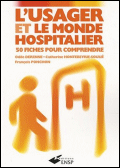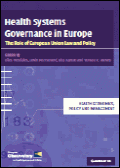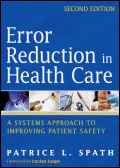LU POUR VOUS DE JUIN-JUILLET 2011 : livres du mois - sites du mois - working papers
Tous les lu pour vous
LES LIVRES DU MOIS
Financer nos dépenses de santé : Que faire ?
Prieur C., Soubie R.
Paris : L'Harmattan : 2011 : 283 p.
Le financement du système de santé français par une assurance maladie obligatoire permet à chaque Français d'accéder aux soins dont il a besoin, sans obstacle financier. Mais le maintien de ce système est menacé par la croissance de ses dépenses. Il faut adapter la Sécurité sociale au vieillissement de la population comme au progrès de la médecine. Cet ouvrage est une réflexion sur l'organisation du système de soins et son fonctionnement - les orientations à suivre pour que la croissance des dépenses revienne à un rythme plus raisonnable. Il comprend aussi une présentation de trois modèles de systèmes de protection sociale : celui de la Grande-Bretagne, d'inspiration beveridgienne, celui des Pays-Bas, d'inspiration bismarckienne et celui des Etats-Unis, plus libéral (4e de couverture).
Les défis du vieillissement. Age, emploi, retraite, perspectives internationales.
Guillemard A.M.
Paris : Armand Colin : 2010 : 358 p.
Comment les pays développés font-ils face à l'allongement de la vie conjugué au vieillissement des populations ? En s'appuyant sur les comparaisons internationales des politiques publiques et des pratiques d'entreprises, le livre démontre que le défi posé par le vieillissement n'est pas seulement celui des retraites et de leur financement. Il est aussi celui de l'emploi, particulièrement pour les salariés qui avancent en âge. Plus largement, relever ce défi implique de repenser la manière dont nous répartissons des temps de travail, d'inactivité et de formation sur le parcours de vie et dont nous couvrons les risques sociaux aux différents âges. (extrait 4e de couverture.)
Stress au travail et santé : situation chez les indépendants.
Algava E., Chouaniere D., Cohidon C., Sermet C. et al.
Paris : INSERM : 2011 : 12-483 p.
Ce livre représente les travaux du groupe d'experts réunis par l'Institut national de la santé et de la recherche médicale (INSERM) dans le cadre de la procédure d'expertise collective, pour répondre à la demande du Régime social des indépendants (RSI) concernant le stress d'origine professionnelle chez les travailleurs indépendants et ses répercussions sur la santé. Ce travail s'appuie sur les données scientifiques disponibles en date du second trimestre 2010. Près de 1 500 articles ont constitué la base documentaire de cette expertise.
L'usager et le monde hospitalier : 50 fiches pour comprendre.
Hontebeyrie-Soulie C., Ponchon F.
Rennes : Editions ENSP : 2011 : 239 p.
Le mouvement de démocratie sanitaire en cours nécessite des outils pour mieux décrypter le fonctionnement hospitalier dans sa diversité et sa complexité. Les auteurs de L'usager et le monde hospitalier clarifient les notions essentielles pour comprendre l'hôpital. Les 50 fiches proposées couvrent trois grands thèmes : l'usager et l'hôpital, intégrant l'ensemble des dispositions sur les droits des personnes malades et la représentation de celles-ci dans les systèmes de soins, l'organisation hospitalière en général et en interne, la place de l'hôpital dans le système de santé afin de répondre au mieux aux besoins de santé et aux missions fixées par les autorités sanitaires. Chaque fiche propose d'abord une synthèse du sujet. La rubrique "Problématique actuelle" fournit les clés indispensables pour situer le contexte : enjeux, réformes en cours... Les compléments bibliographiques et un choix de sites Web permettent d'aller plus loin. Cet ouvrage intégre les dernières évolutions législatives et réglementaires, notamment les dispositions nombreuses de la loi n° 2009-879 du 21 juillet 2009 portant réforme de l'hôpital et relative aux patients, à la santé et aux territoires (4e de couverture).
Health Systems Governance in Europe : The role of European Union Law and Policy.
Gouvernance des systèmes de santé en Europe : le rôle de la loi et des politiques de l'Union européenne.
Mossialos E., Permanand G., Baeten R., Hervey T.K.
Cambridge : Cambridge University Press : 2011 : 21 p. + 762 p.
This book, a co-publication by the European Social Observatory (OSE) and the European Observatory on Health Systems and Policies, was funded by the Belgian federal health authorities (SPF Santé Publique) and the National Institute for Health and Disability Insurance (NIHDI/INAMI). It offers a state of the art of academic discussion on a number of current and emerging governance issues in EU healthcare policy, including regulatory, legal, ‘new governance' and policy-making dynamics.The study looks into different areas of European Union policy and law-making that have an impact on national healthcare systems. It provides policy-makers with a compelling and rigorous analysis of the real and potential impacts of EU integration on the organisation of healthcare provision and the protection of public health, highlighting the need to balance economic and social imperative (4e de couverture).
Epidemiology and the people's health.
Epidémiologie et santé des populations.
Krieger N.
Oxford : Oxford University Press : 2011 : 10 p.+ 381 p.
Epidemiology is often referred to as the science of public health. However, unlike other major sciences, its theoretical foundations are rarely articulated. While the idea of epidemiologic theory may seem dry and arcane, it is at its core about explaining the people's health. It is about life and death. It is about biology and society. It is about ecology and the economy. It is about how myriad aspects of people's lives - involving work, dignity, desire, love, play, conflict, discrimination, and injustice - become literally incorporated into our bodies and manifest in our health status, individually and collectively. And it is about essential knowledge critical for improving the people's health and minimizing inequitable burdens of disease, disability, and death. Woven from a vast array of schools of thought, including those in the natural, social, and biomedical sciences, epidemiologic theory is a rich tapestry whose time for analysis is long overdue. By tracing its history and contours from ancient societies on through the development of - and debates within - contemporary epidemiology worldwide, Dr. Krieger shows how epidemiologic theory has long shaped epidemiologic practice, knowledge, and the politics of public health. Outlining an ecosocial theory of disease distribution that situates both population health and epidemiologic theory in societal and ecologic context, she offers a more holistic picture of how we embody the human experience. This concise, conceptually rich, and accessible book is a rallying cry for a return to the study and discussion of epidemiologic theory: what it is, why it matters, how it has changed over time, and its implications for improving population health and promoting health equity. It should be required (4e de couverture).
Error reduction in Health Care : a system approach to improving patient safety.
La réduction des erreurs dans les soins de santé : approche d'un système pour améliorer la sécurité sanitaire.
Spath P.L., Leape L.
San Francisco : John Wiley and Sons / Jossey-Bass : 2011 : 392 p.
Completely revised and updated, this second edition of Error Reduction in Health Care offers a step-by-step guide for implementing the recommendations of the Institute of Medicine to reduce the frequency of errors in health care services and to mitigate the impact of errors when they do occur. With contributions from noted leaders in health safety, Error Reduction in Health Care provides information on analyzing accidents and shows how systematic methods can be used to understand hazards before accidents occur. In the chapters, authors explore how to prioritize risks to accurately focus efforts in a systems redesign, including performance measures and human factors. This expanded edition covers contemporary material on innovative patient safety topics such as applying Lean principles to reduce mistakes, opportunity analysis, deductive adverse event investigation, improving safety through collaboration with patients and families, using technology for patient safety improvements, medication safety, and high reliability organizations (4e de couverture).
The Quality and Outcomes Framework (QOF) : tranforming general practice.
Accord-cadre sur la qualité des soins et la rémunération à la performance : transformer la pratique en médecine générale.
Gillam S., Siriwardena A.N.
Oxon : Radcliffe Publishing : 2011 : 170 p.
The Quality and Outcomes Framework has deeply divided UK general practitioners. I commend this book and applaud its determination to scrutinise every aspect of the Quality and Outcomes Framework - good and bad and in-between. - From the Foreword by Iona Heath General practice in the UK faces transformation following the introduction of the Quality & Outcomes Framework (QOF), a pay-for-performance scheme unprecedented in the NHS, and the most comprehensive scheme of its kind in the world. Champions claim the QOF advances the quality of primary care; detractors fear the end of general practice as we know it. The introduction of the QOF provides a unique opportunity for research, analysis and reflection. This book is the first comprehensive analysis of the impact of the QOF, examining the claims and counter-claims in depth through the experience of those delivering QOF, comparisons with other countries, and analysis of the wealth of research evidence emerging. Assessments of the true impact of QOF will influence the development of health services in the UK and beyond. This book is essential reading for anyone with an interest in the future of general practice and primary care, including health professionals, trainers, students, MRCGP candidates and researchers, managers, and policy-makers and shapers (4e de couverture).
LES SITES DES MOIS DE JUIN-JUILLET
Cartes de l'offre de soins et de l'activité hospitalière
www.ars.sante.fr/Cartes-de-l-activite-hospitali.98022.0.html
Presentation
Cet espace du site national des ARS contient des cartes sur l'activité hospitalière en France. Ces cartes interactives, sont réalisées par l'Agence technique de l'information sur l'hospitalisation (ATIH).
Elles sont issues du PMSI (Programme de médicalisation des systèmes d'information) et offrent des données sur l'activité Médecine, Chirurgie et Obstétrique (MCO) hors séances et séances, les soins de suite et réadaptation (SSR), l'hospitalisation à domicile (HAD), la cartographie PMSI en psychiatrie.
Pour chaque thématique sont présentés la méthodologie utilisée, un guide d'utilisation des fonctionnalités du module de cartographie, un module de démonstration et une cartographie PMSI - France par département.
Cet espace propose également une carte nationale de l'offre de soins structurée par les territoires de santé associés aux Schémas régionaux d'organisation sanitaire (SROS 3). Elle tire ses informations du répertoire FINESS et distingue secteur privé et secteur public (par entité juridique).
Cartosante
www.ars.sante.fr/C-rtoSante.92760.0.html
Presentation
Cet outil a été conçu comme une aide à la décision en matière de démographie médicale, afin d'apprécier l'adéquation entre l'offre et le recours aux soins. Il permet d'accéder à quatre types de données : consommation d'actes de soins, activité moyenne des médecins généralistes, densité en matière de médecins généralistes et attractivité/accessibilité des médecins.
Dans l'application interactive qui est proposée, le recours aux soins des médecins généralistes est abordé au travers de quatre cartes thématiques par canton et cinq cartes par communes explorant différentes facettes du fonctionnement de ce secteur du système de santé régional (demande, offre, flux de clientèle).
Ce dispositif sera étendu progressivement à d'autres professions de santé (infirmiers, kinésithérapeutes, chirurgiens dentistes)
Cartographie régionale de l'offre de soins en santé mentale
www.sante.gouv.fr/cartographie-regionale-de-l-offre-de-soins-en-sante-mentale.html
Presentation
Cette cartographie présente les lieux de soins de santé mentale et les indicateurs départementaux de capacités et d'activité en psychiatrie générale et infanto-juvénile par région. Les données sont issues d'un document de travail élaboré par la DREES. Cette approche par région en distinguant psychiatrie générale et psychiatrie infanto-juvénile propose une cartographie des structures de prise en charge (à temps complet, à temps partiel et en ambulatoire). Sont représentées les densités départementales de lits et places déclarés par les établissements de santé ayant répondu à l'enquête (lits d'hospitalisation à temps plein, des places d'hospitalisation à domicile, des places en accueil familial thérapeutique, des places en appartement thérapeutique, des lits en centre de post cure, des lits en centre de crise, et des places en hôpital de jour et de nuit, rapportés au nombre d'habitants dans le département).
VU DE L'ETRANGER : QUELQUES WORKING PAPERS ANALYSES
Assurance maladie
Universal Health Insurance Coverage: Progress and Issues. 

Couverture d'assurance maladie universelle : progrès et problématiques.
Gruber J.
Rochester : Social Science Electronic Publishing : 2011 : 25 p.
Jonathan Gruber was a key architect of Massachusetts' ambitious health reform effort, and in 2006 became an inaugural member of the Health Connector Board, the main implementing body for that effort. He delivered this lecture on October 2, 2009, and his references are to Congressional bills that were under consideration on that date. He laid out the universal coverage debate that's gone on for a long time in the United States; described a new solution that he think they found for Massachusetts; described how the Massachusetts reform works; and how it can be extended nationally. Finally he spent time on the key issues that Congress is facing in fall 2009 trying to take this model to the national level.
The National Programme for IT in the NHS: an update on the delivery of detailed care records systems. 

Le programme national pour les technologies de l'information du système national de santé : une mise à jour sur le dispositif des dossiers médicaux.
National Audit Office. (N.A.O.). Londres. GBR
Londres : NAO : 2010 : 46 p.
Ce rapport présente le troisième bilan du programme national pour les technologies de l'information (National programme for information technology – NPFIT) en cours de mise en œuvre en Angleterre depuis 2002 par le National health service (NHS) et critique sévèrement les « Electronic care records » (sorte de DMP) qui sont le pivot du NHS IT project. 2,3 milliards d'euros ont été dépensés sans générer les économies attendues, et le National Accounting Office (NAO) ne croit pas que les 4,6 milliards d'euros restants à investir amélioreront la situation. Parmi les critiques sont cités les retards sur le calendrier, le peu de bénéfice pour le patient, les difficultés de fonctionnement, et le nombre important de professionnels de santé et d'"hospital trusts" qui renoncerait à rejoindre le dispositif. Le projet va être révisé par le gouvernement britannique.
Economie de la santé
The Economics of Risky Health Behaviors. 

L'économie des comportements de santé à risque.
Cawley J., Ruhm C.
Cambridge : NBER : 2011/05 : 161 p.
Risky health behaviors such as smoking, drinking alcohol, drug use, unprotected sex, and poor diets and sedentary lifestyles (leading to obesity) are a major source of preventable deaths. This chapter overviews the theoretical frameworks for, and empirical evidence on, the economics of risky health behaviors. It describes traditional economic approaches emphasizing utility maximization that, under certain assumptions, result in Pareto-optimal outcomes and a limited role for policy interventions. It also details nontraditional models (e.g. involving hyperbolic time discounting or bounded rationality) that even without market imperfections can result in suboptimal outcomes for which government intervention has greater potential to increase social welfare. The chapter summarizes the literature on the consequences of risky health behaviors for economic outcomes such as medical care costs, educational attainment, employment, wages, and crime. It also reviews the research on policies and strategies with the potential to modify risky health behaviors, such as taxes or subsidies, cash incentives, restrictions on purchase and use, providing information and restricting advertising. The chapter concludes with suggestions for future research.
Etat de santé
Childhood Health and Differences in Late-Life Health Outcomes Between England and the United States. 

Etat de santé durant l'enfance et différences en matière d'état de santé à la fin de la vie entre l'Angleterre et les Etats-Unis.
Banks J., Oldfield Z., Smith J.P.
Cambridge : NBER : 2011/05 : 33 p.
In this paper we examine the link between retrospectively reported measures of childhood health and the prevalence of various major and minor diseases at older ages. Our analysis is based on comparable retrospective questionnaires placed in the Health and Retirement Study and the English Longitudinal Study of Ageing – nationally representative surveys of the age 50 plus population in America and England respectively. We show that the origins of poorer adult health among older Americans compared to the English trace right back into the childhood years – the American middle and old-age population report higher rates of specific childhood health conditions than their English counterparts. The transmission into poor health in mid life and older ages of these higher rates of childhood illnesses also appears to be higher in America compared to England. Both factors contribute to higher rates of adult illness in the United States compared to England although even in combination they do not explain the full extent of the country difference in late-life health outcomes.
Hôpital
Physician Payment Mechanisms, Hospital Length of Stay and Risk of Readmission: a Natural Experiment. 

Expérimentation naturelle sur les mécanismes de paiement des médecins, la durée de séjour à l'hôpital et le risque de réadmission.
Echevin D., Fortin B.
Laval : CIRPEE : 2011/05 : 33 p.
We provide an analysis of the effect of physician payment methods on their hospital patients' length of stay and risk of readmission. To do so, we exploit a major reform implemented in Quebec (Canada) in 1999. The Quebec Government introduced an optional mixed compensation (MC) scheme for specialist physicians working in hospital. This scheme combines a fixed per diem with a reduced fee for services provided, as an alternative to the traditional fee-for-service system. We develop a simple theoretical model of a physician's decision to choose the MC scheme. We show that a physician who adopts this system will have incentives to increase his time per clinical service provided. We demonstrate that as long as this effect does not improve his patients' health by more than a critical level, they will stay more days in hospital over the period. At the empirical level, using a large patient-level administrative panel data s et from a major teaching hospital, we estimate a model of transition between spells in and out of hospital analog to a difference-in-differences method. The model is based on a two-state Mixed Proportional Hazard approach. We find that the hospital length of stay of patients treated in departments that opted for the MC system increased on average by 10.8% (0.71 days). However, the risk of readmission to the same department with the same diagnosis does not appear to be overall affected by the reform.
Mental comorbidity and its contribution to increased use of acute care hospital services. 

La comorbidité mentale et ses conséquences sur l'augmentation du recours aux services dispensés dans les hôpitaux de soins de courte durée. 

Johansen H., Sanmartin C.
Ottawa : Statistics Canada : 2011 : 38 p.
This report represents an assessment of a comprehensive set of factors associated with acute-care hospitalizations for mental conditions in Canada. The first part explores the overall burden of a mental condition as the most responsible condition (the condition considered most responsible for the hospitalization) and as a comorbid condition (a diagnosed condition other than the most responsible for the hospitalization) in acute-care hospitals in Canada. It presents the number of hospitalizations, the number of hospital days and the average length of stay of a hospitalization. In the second part, linked health survey and hospital data are used to describe the socioeconomic and lifestyle factor characteristics of patients who were admitted to an acute-care hospital with a mental condition within four years after responding to the survey.
Médicaments
Pharmaceutical Pricing in Europe: Is Differential Pricing a Win-Win Solution ? 

Fixation des prix des médicaments en Europe : un système de prix différenciés n'est-il pas la solution où tout le monde est gagnant ?
Garau M., Towse A., Danzon P.
Londres : OHE : 2011 : 6 p.
This paper examines the potentially positive impact of differential pricing in Europe and the overall negative effects of international reference pricing (IRP) measures. The authors point out that IRP actually encourages higher prices in lower-income countries, can delay marketing/patient access in lower-price countries, and ultimately translates into less investment in R&D. Differential pricing assumes that countries with lower incomes should pay lower prices, encourages the earliest possible marketing in all countries, and provides incentives for innovation.
L'impact de la publicité directe au consommateur sur les visites médicales et les demandes de médicaments : résultats empiriques et implications en matière de politique publique. 

The Impact of Direct-to-Consumer Advertising of Prescription Drugs on Physician Visits and Drug Requests: Empirical Findings and Public Policy Implications.
Liu Q., Sachin G.
Rochester : Social Science Electronic Publishing : 2011 : 39 p.
This study analyzes the effect of Direct-to-consumer advertising (DTCA) expenditures for anti-hyperlipidemia drugs on patient behaviors. The key findings are: (a) DTCA expenditures have a positive and long-term effect on the number of visits to physicians by newly-diagnosed hyperlipidemia patients. (b) The effectiveness of DTCA in generating new patient visits varies substantially across patient sub-groups. (c) The effect of DTCA is larger on drug visits than on non-drug-only visits. (d) Own-brand DTCA expenditures increase the number of patient requests for Lipitor and Zocor, but have no effect on patient requests for Pravachol. Competing drugs' DTCA expenditures have a positive effect only on patient requests for the leading brand, Lipitor. (e) A cost-effectiveness analysis suggests that the economic benefits of DTCA in terms of life years saved by preventing cardiovascular disease are considerably larger than the costs of advertising. (f) DTCA on TV has strong effects on underserved segments of the population, such as those on Medicaid. We believe this finding should be carefully considered by proponents of a complete ban or stricter regulations on DTCA.
Pharmaceutical Use Following Generic Entry: Paying Less and Buying Less. 

Consommation pharmaceutique après l'entrée d'un médicament générique sur le marché : payer et acheter moins.
Huckfeldt P.J., Knittel C.R.
Cambridge : NBER : 2011/05 : 48 p.
We study the effects of generic entry on prices and utilization using both event study models that exploit the differential timing of generic entry across drug molecules and cast studies. Our analysis examines drugs treating hypertension, high blood pressure, type 2 diabetes, and depression using price and utilization data from the Medical Expenditure Panel Survey. We find that utilization of drug molecules starts decreasing in the two years prior to generic entry and continues to decrease in the years following generic entry, despite decreases in prices offered by generic versions of a drug.This decrease coincides with the market entry and increased utilization of branded reformulations of a drug going off patent. We show case study evidence that utilization patterns coincide with changes in marketing by branded drug manufacturers. While the reformulations---often extended-release versions of the patent-expiring drug---offer potential health benefits, the FDA does not require evidence that the reformulations are improvements over the previous drug in order to grant a patent. Indeed, in a number of experiments comparing the efficacies of the patent-expiring and reformulated drugs do not find statistical differences in health outcomes calling into question the patent-extension policy.
Soins de santé primaires
The Effect of a Major Coverage Expansion on Physician Work Hours: Evidence from the Children's Health Insurance Program. 

Les effets d'une meilleure couverture maladie sur les heures de travail des médecins : évidence à partir du programme "Assurance maladie des enfants".
Fang H., Chapin W.
Washington : GAO : 2011/04/21 : 49 p.
The passage of health reform has raised a number of questions, including the following: how will physicians respond to a major coverage expansion? In particular, will they work longer hours to accommodate an influx of demand? Our study addresses this question with a natural experiment - we use the introduction of the Children's Health Insurance Program (CHIP) in 1997, which significantly expanded children's eligibility for public health insurance coverage. The magnitude of the CHIP expansion varied across states and over time, allowing its effects to be identified using a state-year fixed effects model. We focus on pediatricians, and we measure their self-reported work hours using multiple waves of the physician survey component of the Community Tracking Study. We test whether pediatricians in states with larger CHIP expansions increased their annual work hours relative to pediatricians in states with smaller CHIP expansions. We find a large negative relationship between the magnitude of a state's CHIP expansion and trends in pediatricians' work hours. One possible explanation for this finding is that reimbursement rates in the CHIP program are well below that of private insurers. If CHIP expansions reduced average reimbursement rates, and if pediatricians exhibit a normal supply curve, then lower average reimbursement rates could account for the observed association with work hours.
Vieillissement
Disability and social security reforms : the french case. 

Incapacité et réformes du système de retraite : le modèle français.
Behaghel L., Blanchet D., Debrand T., Roger M.
Queensland : University of Queensland : 2011 : 33 p.
En France, les sorties précoces de l'emploi sont expliquées principalement par un âge légal de départ à la retraite peu élevé et par l'existence de dispositifs de sorties liés à l'assurance chômage ou à des mesures de préretraites qui permettent aux travailleurs seniors de cesser leur activité avant d'accéder à une retraite « normale ». Pour ces raisons, les dispositifs liés à l'incapacité sont assez peu développés contrairement à la situation qui règne dans des pays où les âges normaux de départs à la retraite sont élevés et où les systèmes de sorties liés au chômage ou à la préretraite sont quasiment inexistants. Pourtant il demeure intéressant d'examiner le rôle de l'incapacité dans le processus de départ à la retraite en France, au moins d'un point de vue prospectif dans un contexte de réduction de la générosité du système de pension et des dispositifs de sortie alternatifs traditionnels. L'étude des réformes passées montre que l'incapacité est souvent un dispositif qui se substitue à d'autres dispositifs existants. Les changements dans la détermination des indemnités d'invalidité semblent plus impacter les sorties d'activités via ce dispositif que les modifications des indicateurs de santé tels que les taux de mortalité. Cependant, nos résultats suggèrent que les augmentations des niveaux moyens d'état de santé pendant les dernières deux décennies sont corrélées avec une augmentation des inégalités de santé. Dans un contexte où les pensions vont devenir de moins en moins généreuses, les demandes concernant le mécanisme d'invalidité peuvent, donc augmenter pour deux raisons : suite à l'existence des effets de substitution entre les dispositifs mais également pour répondre à des inégalités de santé grandissantes (Résumé d'auteur).
Disability, Health and Retirement in the United Kingdom. 

Invalidité, santé et retraite au Royaume-Uni.
Banks J., Blundell R., Bozio A.
Cambridge : NBER : 2011/05 : 37 p.
Over the last thirty years pathways to retirement have changed substantially in the UK. They have been dominated by spells of unemployment in the late 1970s, with then an increased importance of disability spells from the mid-1980s onwards. At the end of the period the direct route from work to retirement was increasingly more common. General economic conditions seem to have been important driving forces during the entire period. In contrast changes in health do not seem to provide convincing explanations for these trends: mortality has been falling over the period without any apparent link to the share of the population reporting ill health or disability or to the number claiming benefits. We also find evidence that recent reforms have had some impact. The halting of the previous growth in the rate of in-flow onto disability benefits in the mid-1990s coincided with the implementation of a major reform. Evidence from the pilots of the Pathways-to-Work programme in 2003-2005 suggests that those moving onto disability benefits moved off these benefits faster than they would otherwise have done as a direct result of the programme.
Disability Insurance, Population Health and Employment in Sweden. 

Assurance invalidité, état de santé de la population et emploi en Suède.
Jonsson L., Palme M., Svensson I.
National Bureau of Economic Research. (N.B.E.R.). Cambridge. USA.
This paper describes the development of population health and disability insurance utilization for older workers in Sweden and analyzes the relation between the two. We use three different measures of population health: (1) the mortality rate (measured between 1950 and 2009); (2) the prevalence of different types of health deficiencies obtained from Statistics Sweden's Survey on Living Conditions (ULF, 1975-2005); (3) the utilization of health care from the inpatient register (1968–2008). We also study the development of the relative health between disability insurance recipients and non-recipients. Finally, we study the effect of the introduction of less strict eligibility criteria for older workers in 1970 and 1972 as well as the subsequent abolishment of these rules in 1991 and 1997, respectively.
Disability Insurance and Labor Market Exit Routes of Older Workers in The Netherlands. 

Assurance invalidité et les itinéraires de sortie du marché du travail des travailleurs âgés aux Pays-Bas.
De Vos K., Kapteyn A., Kalwij A.
Cambridge : NBER : 2011/05 : 32 p.
This paper presents information on labor market participation of the elderly, mortality and health, pathways to retirement and rates of participation in various earnings replacing programs in the Netherlands. It presents an overview of reforms to Disability Insurance (DI) and other income maintenance and early retirement programs over the past few decades, and examines to what extent these reforms have affected labor market exit routes of older workers. The overall picture that emerges is that DI receipt appears unrelated to the general health of the population and that over the last two decades relatively fewer older workers exit the labor market through DI. This reduction may, arguably, in part be attributed to stricter DI eligibility rules.
Disability, Pension Reform and Early Retirement in Germany. 

Invalidité, reforme des pensions et retraite anticipée en Allemagne.
Boersch-Supan A.H., Juerges H.
Cambridge : NBER : 2011/05 : 35 p.
The aim of this paper is to describe for (West) Germany the historical relationship between health and disability on the one hand and old-age labor force participation or early retirement on the other hand. We explore how both are linked with various pension reforms. To put the historical developments into context, the paper first describes the most salient features and reforms of the pension system since the 1960s. Then we show how mortality, health and labor force participation of the elderly have changed since the 1970. While mortality (as our main measure of health) has continuously decreased and population health improved, labor force participation has also decreased, which is counterintuitive. We then look at a number of specific pension reforms in the 1970s and 1980s and show that increasing or decreasing the generosity of the pension system has had the expected large effects on old-age labor force participation. Finally, we explore the possible link between early childhood environment and early retirement by analyzing the retirement behavior of cohorts born during World War I, a period of harsh living conditions among the civilian population in Germany. Our data show higher early retirement rates among those cohorts, presumably because those cohorts still suffer from worse health on average many decades after their birth.









